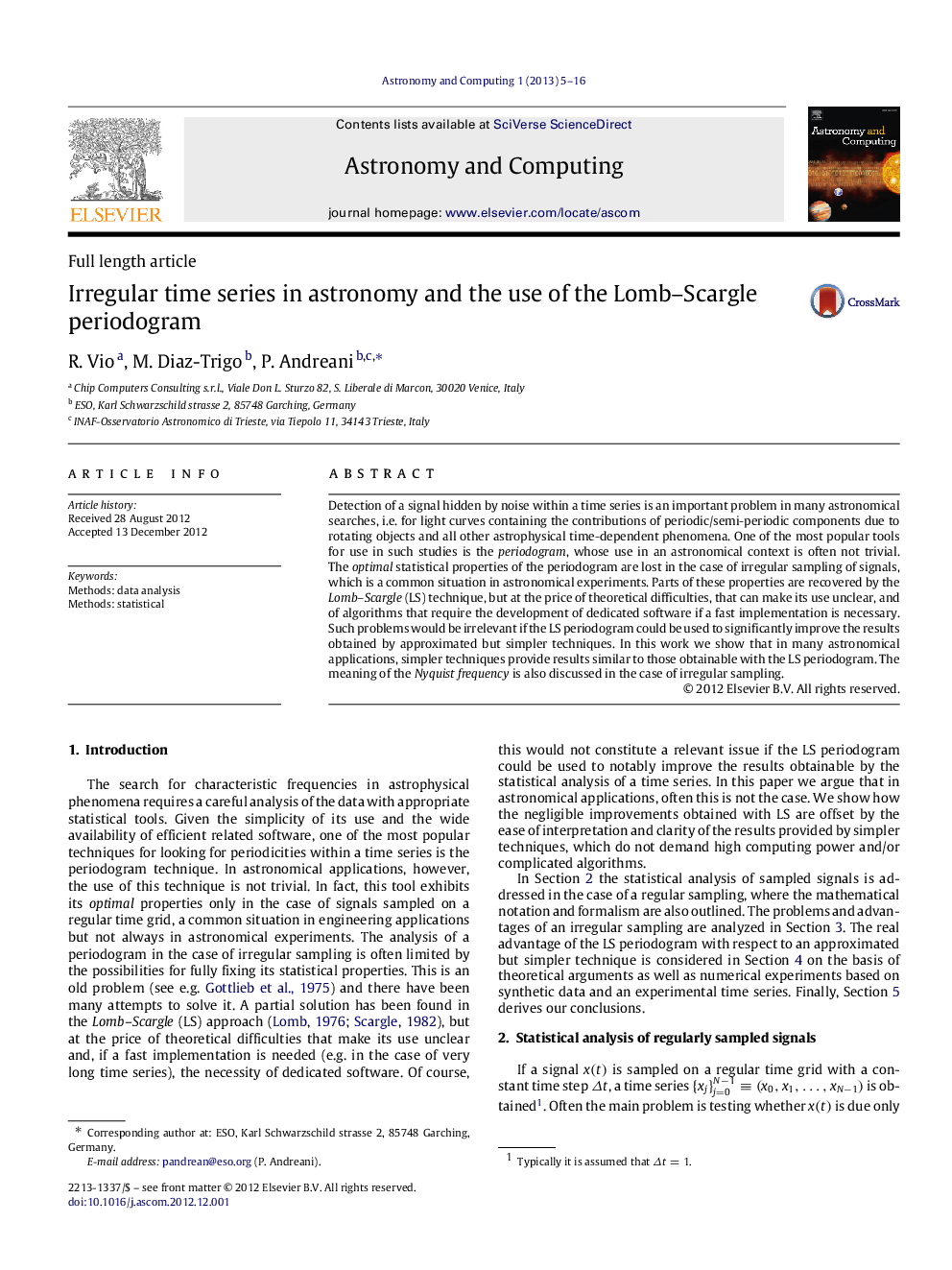| Article ID | Journal | Published Year | Pages | File Type |
|---|---|---|---|---|
| 6906293 | Astronomy and Computing | 2013 | 12 Pages |
Abstract
Detection of a signal hidden by noise within a time series is an important problem in many astronomical searches, i.e. for light curves containing the contributions of periodic/semi-periodic components due to rotating objects and all other astrophysical time-dependent phenomena. One of the most popular tools for use in such studies is the periodogram, whose use in an astronomical context is often not trivial. The optimal statistical properties of the periodogram are lost in the case of irregular sampling of signals, which is a common situation in astronomical experiments. Parts of these properties are recovered by the Lomb-Scargle (LS) technique, but at the price of theoretical difficulties, that can make its use unclear, and of algorithms that require the development of dedicated software if a fast implementation is necessary. Such problems would be irrelevant if the LS periodogram could be used to significantly improve the results obtained by approximated but simpler techniques. In this work we show that in many astronomical applications, simpler techniques provide results similar to those obtainable with the LS periodogram. The meaning of the Nyquist frequency is also discussed in the case of irregular sampling.
Related Topics
Physical Sciences and Engineering
Computer Science
Computer Science Applications
Authors
R. Vio, M. Diaz-Trigo, P. Andreani,
